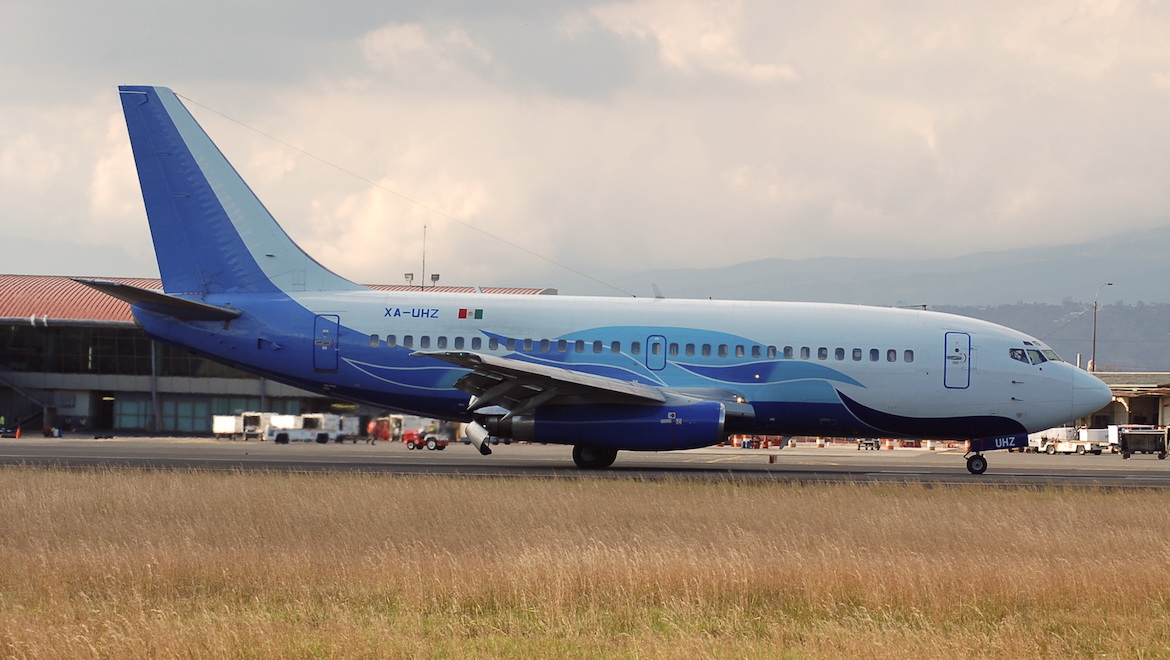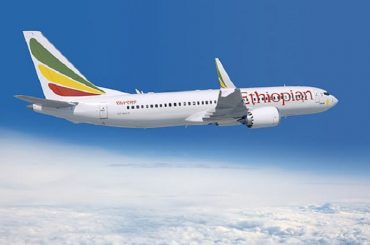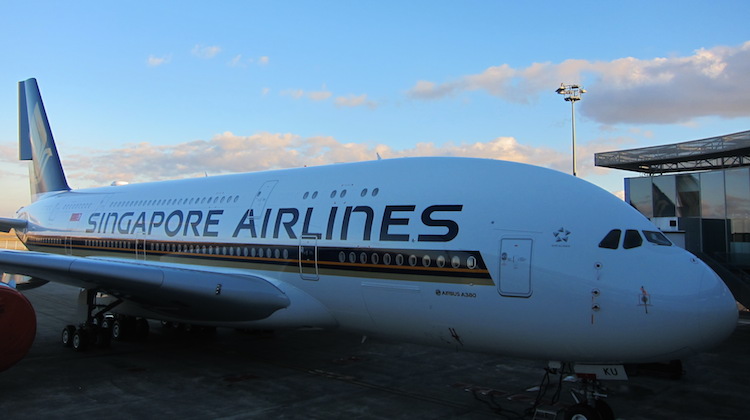
A Boeing 737-200 chartered by Cubana de Aviacion that crashed at Havana in May 2018 took off with weight and balance calculations errors, investigators have found.
The Instituto de Aeronautica Civil de Cuba (IACC) has handed down its final report into Cubana de Aviacion flight CU 972, operated by 737-200 XA-UHZ chartered from Global Aerolineas Damojh.
There was only one survivor among the six crew and 106 passengers on board the flight.
While the final report was published in Spanish, The Aviation Herald has translated portions of the report that relate to the probable cause of the accident.
The translation is reproduced here, with minimal editing:
The most likely cause of the accident was the fall of the aircraft as result of its entry into abnormal positions immediately after the separation of the landing gear from the runway surface (lift off) during takeoff, that led to loss of control of it due to a chain of errors with preponderance in the human factor.
Contributing factors were:
– inconsistencies in crew training
– errors in weight and balance calculations
– low operational standards set out in flight
The IACC reported XA-UHZ was chartered from May 14th to May 18th 2018 to carry out charter flights on behalf of Cubana de Aviacion. On the last day of the contract the aircraft was to carry out flight CU-972 from Havanna to Holguin after crew change.
The aircraft departed Havanna’s Runway 06. However, immediately after lift off rolled to the right more than 35 degrees, the pitch angle increased, the crew called Mayday, the Captain took control of the aircraft, the First Officer relinquished control of the aircraft, the aircraft rolled left and right a number of times before ultimately rolling right and losing height impacting the ground. Six crew and 106 passengers perished in the crash, one passenger survived with serious injuries.
The Captain (53, ATPL, 16,655 hours total), pilot monitoring, was assisted by a First Officer (40, CPL, 2,314 hours total), pilot flying. The aircraft had accumulated 69,596 flying hours in 70,651 flight cycles.
According to the load sheet the aircraft departed with a takeoff weight of 99,906 lbs (maximum takeoff weight 108,207 lbs), CG at 17.4 per cent MAC (29 per cent permitted) and the stabiliser position at 5 3/4 units. V1 was computed at 128 KIAS, Vr at 130 KIAS, V2 at 136 KIAS with Vs computed at 113 KIAS.
The IACC determined that the aircraft actually departed with a takeoff weight of 104,020 lbs and the CG at 28.5 per cent.
The IACC stated that the load sheet assumed 62 passengers in the front part of the cabin, which however had only a capacity of 54 passengers, the cargo weights were wrong and there was 5000lbs more fuel on board than calculated.
The load sheet thus produced mismatches in both mass and distribution of cargo and luggage, fuel weight, centre of gravity and position of stabiliser trim. The corrected takeoff performance thus would have been: V1=134 KIAS, Vr=134 KIAS, V2=138 KIAS with Vs at 115 KIAS, stabiliser position at 3 1/4 units.
Both takeoff performances computed for EPR set to 2.1 and flaps 5 for takeoff.
According to the FDR the aircraft began to roll right immediately after the main gear left the ground reaching a roll rate of 5.6 degrees/s until reaching a maximum of 33.5 degrees, then a left rudder input occurred reaching a displacement of 12.6 degrees.
At that point, 85 feet AGL, the pitch had risen to 27.2 degrees nose up and the IAS was 139 knots. There is no indication on the FDR of any inadequate movements of the rudder (including yaw damper), slats and flaps remained in their position and also did not produce any asymmetry.
The elevators were working properly. The crew attempted to counter the right roll by turning the control wheel to the left and applying left rudder, this rolled the aircraft back to wings level briefly and even reached -13.6 degrees of bank (to the left), the rudder deflection is reduced to 1.53 degrees.
For a brief time the flight conditions are in an acceptable range to continue flying with the pitch angle at 16.5 degrees nose up. However, the aircraft rolled right again at 12 degrees/s reaching 28 degrees, the rudder is deflected again to 12.4 degrees left, the airspeed reduced to 124 KIAS at 20.5 degrees nose up.
The wings came not level again due to the loss of effectivity of spoilers due to the reduced airspeed and remained at 9.31 degrees right bank. The aircraft rolled again to the right, IAS reduced to less than 122 knots, the pitch increased to 25.1 degrees, the aircraft entered stall.
The ailerons were fully deflected to the left, the rudder moved to the left, and aircraft rolled left at 17.2 degrees/s and reached -39.09 degrees, ailerons and rudder were deflected to the right now, the aircraft rolled right at 27 degrees/s and reached 72.6 degrees right bank, the airspeed reduced further to 116 KIAS, the aircraft lost height and impacted ground.
The IACC analysed that no evidence was found the performance by either flight crew was impaired by incapacitation, fatigue or other physiological factors.
The crew performed all checklists.
Weather was no contributing factor.
Air Traffic Control and Communications were no factors into the accident.
Airport and navigation aids were no factors into the accident.
Although some gaps were identified in the maintenance records, which indicate failures in good practise of monitoring maintenance activities, there were no technical problems identified that could have caused or contributed to the accident.
There were some mismatches identified in the mass and mass distribution, which consequently also impaired the stabiliser position.
In the search for the right roll tendency the fuel quantity indicators underwent particular scrutiny in examination, both needles were working properly in both the cockpit indications and the fuel supply panel, and there was no notable disagreement between left and right wing tank. Fuel distribution therefore was ruled out as possible cause or contributing factor.
No anomaly was found with the ailerons of the aircraft.
One of the rudder power control units was found with a fractured bar. A laboratory investigation determined the bar suffered a ductile fracture as result of impact forces with terrain. A malfunction of ailerons and rudder thus could be ruled out as cause of the right roll tendency.
According to the FDR the rudder trim was found at 0.8 inches although for takeoff it should have been in neutral position at 1.92 inches. This is the equivalent of about 12 degrees rudder deflection to the right and is a substantial deviation, which can invoke unwanted oscillations if pilots react erroneously (startle effect, pilot induced oscillations, …) and do not detect and correct the condition.
However, had the rudder been deflected prior to beginning of the takeoff run, a strong yaw movement would have been noticed at the latest at 100 KIAS, however, there is no evidence of such a yaw in the FDR data nor in the CVR (pilot reactions/comments).
With the help of the aircraft manufacturer and the NTSB the FDR read out was examined and corrected. With the new analysis it was established the rudder moved correctly and freely in line with the control commands, it was unlikely there was any misalignment. As result, there is no evidence to corroborate that the explanation could be considered a causal or contributing factor.
Although a problem with the tension of the cables to the right wing spoilers was found, tests showed that had the spoilers not been in their stowed position a warning would have activated in the cockpit. Even if the spoilers had extended to their maximum position, the aircraft could have still been controlled. The spoilers therefore could be ruled out as cause or contributing factors.
The flaps were found in their 5 degrees position as selected, no flaps asymmetry alert had occurred, all flap fasteners were checked and found normal. Therefore it was concluded the flaps were operating normally and did not contribute to the accident.
Both engines were examined, both were operating normally, the thrust reverser systems were stowed.
In summary of the aircraft examination, the IACC analysed that initially the aircraft reacted properly to pilot inputs, but subsequently due to the attitude the aircraft reached the performance was degraded until the crew lost control.
The IACC analysed that the low height was a conditioning factor into the accident. While the aircraft rolled right its pitch increased despite pilot inputs to the contrary, the stabiliser trim was not moved because the crew could not permit any loss of height. When the crew managed to correct the right bank, the pitch angle reduced to an acceptable/normal range, too. The unusual pitch may have been the result of mass distribution/wrong trim setting.
Both Captain and First Officer had undergone their required re-training courses, however, no records were presented about what exercises had been performed during those training sessions.
In particular no records were available demonstrating that the pilots had undergone recovery from unusual attitudes training.
More information about the accident can be found on The Aviation Herald website.
VIDEO: A 2018 news report on the crash of flight CU 972 from the Canadian Broadcasting Corporation’s YouTube channel.











